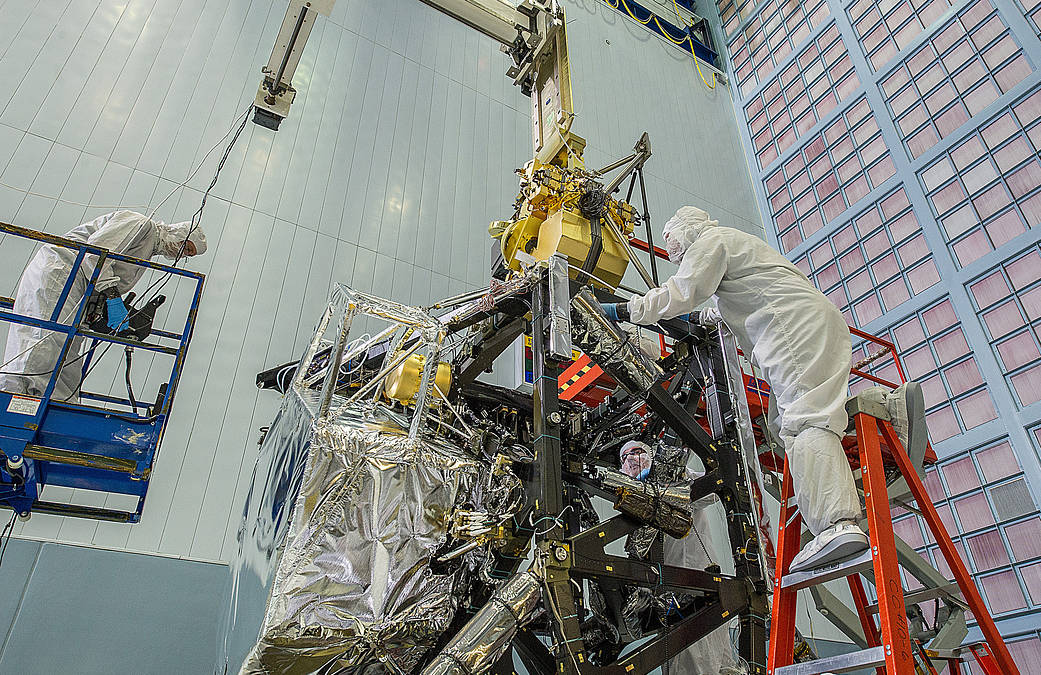Inside the world’s largest clean room at NASA’s Goddard Space Flight Center in Greenbelt, Md., engineers worked tirelessly to install another essential part of the James Webb Space Telescope – the Near Infrared Camera into the heart of the telescope.
To complete this installation, the engineers needed to carefully move NIRCam inside the heart or ISIM, or Integrated Science Instrument Module that will house all of the science instruments.
“Installing NIRCam into the center of the structure is nerve wracking because of the tight clearances,” said Marcia J. Rieke, Professor of Astronomy at the University of Arizona, and principal investigator for the NIRCam. “I’m glad nothing bumped, and all the bolts are in place.”
NIRCam is a unique machine because in addition to being one of the four science instruments on the Webb, it also serves as the wavefront sensor, which means it will provide vital information for shaping the telescope mirrors and aligning its optics so that they can function properly and see into the distant universe. The NIRCam instrument will operate at very cold temperatures, and will be tested to ensure that it will be able to withstand the environment of space.
The NIRCam is Webb’s primary imager that will cover the infrared wavelength range 0.6 to 5 microns. It will detect light from the earliest stars and galaxies in the process of formation, the population of stars in nearby galaxies, as well as young stars and exoplanets in the Milky Way. NIRCam is provided by the University of Arizona and Lockheed Martin Advanced Technology Center.
Webb is an international project led by NASA with its partners the European Space Agency and the Canadian Space Agency.
The James Webb Space Telescope is the successor to NASA’s Hubble Space Telescope. It will be the most powerful space telescope ever built.
For more information about the Webb telescope, visit: www.jwst.nasa.gov or www.nasa.gov/webb
Image credit: NASA/Chris Gunn
Text credit: Laura Betz
NASA’s Goddard Space Flight Center, Greenbelt, Md.



























